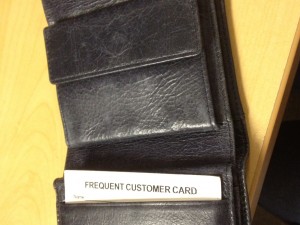 “Loyalty” is one of these buzz words that marketers cannot escape.
“Loyalty” is one of these buzz words that marketers cannot escape.
In the most literal sense of the word, “loyalty” implies that a person or group of people is faithful to another person, country, group, or cause. For the business world, “loyalty” alludes to the fact that a brand’s customers will choose its offerings, despite being faced with a slew of competing choices. Whether customers remain loyal because of low prices, convenience, superior service, and/or exceptional products or services, some element that they weight heavily in the purchasing process stands out in their minds and warrants a commitment.
Think about the last time you took a vacation. How many opportunities did you have to sign up for loyalty programs from the time that your trip started ‘til your safe return home? From air travel loyalty programs to car rental loyalty programs and hotel stay rewards, the vast majority of travel and hospitality providers offer some kind of incentive program for repeat customers. Granted, these large corporations have the luxury of enormous volumes of data about their clients and skilled analysts with the know-how to analyze that data. For smaller companies with access to far less data and limited analytical resources, the elaborate loyalty programs manned by these powerhouses may be impossible to replicate.
However, a loyalty program does not need to be complex in order to drive repeat business. The tiers of a loyalty program can be based on factors as straightforward as “dollars spent in a given year” or “number of purchases in a given month.” Any way you can segment your customers could be the foundation for a loyalty program, and you can even start as small as a birthday reward program (see my post about Birthday Benefits)- all you need is record of your customers’ birthday months and days.
Offering rebates, rewards points, exclusive events, promotional giveaways and educational resources can also help you to increase customer loyalty. For optimal results, keep it simple; chances are good that your end users already belong to a number of other loyalty programs. Your program will resonate in their minds if you communicate clearly what the requirements are and how opting in now will benefit them in the long-run.
By dedicating time, energy, and money to building a loyalty program, your company will be one step closer to retaining loyal customers who will support and advocate for your brand in a highly competitive global marketplace.